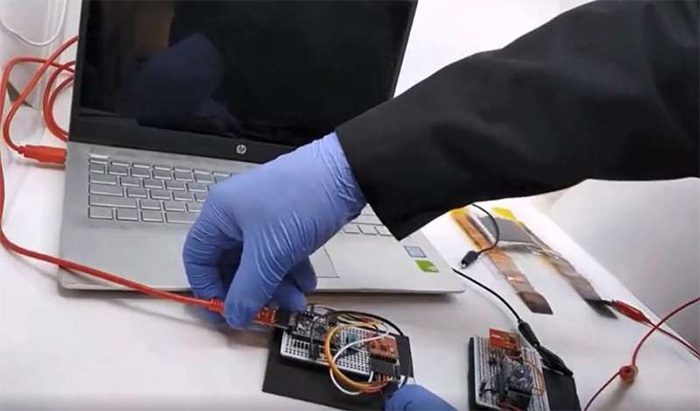Researchers at Drexel University (USA) are making strides in bringing wearable textile technology to reality.
The research was published in the journal Materials Chemistry A. Material scientists from Drexel University collaborated with Accenture Laboratories to successfully develop a flexible, wearable supercapacitor patch.
The team utilized MXene—a material designed at Drexel University in 2011. They created a textile-based supercapacitor that can be charged in just a few minutes. This device can power the temperature sensor of an Arduino microcontroller and wirelessly transmit data for nearly two hours.

To create the supercapacitor, the research team immersed woven fabric samples in an MXene solution.
Dr. Yury Gogotsi at Drexel University, a co-author of the study, stated: “This represents an important development for wearable device technology. To fully integrate the technology into fabrics, we also need to seamlessly incorporate its power source.”
The research focused on examining the durability, electrical conductivity, and energy storage capacity of the textile materials. The new findings demonstrate that the device can withstand the rigors of being woven into fabric while being capable of storing and supplying sufficient energy to run programmable electronic devices for hours.
“While many materials can be integrated into textiles, MXene has a distinct advantage over other materials because it possesses natural electrical conductivity and stable water dispersion. This means that textiles can be easily coated with MXene without the need for chemicals and additional manufacturing steps,” the researchers noted.
To fully integrate these fabric devices in a “wearable” form, the research team sought to combine a power source into the composite. They designed a woven MXene supercapacitor patch aimed at maximizing energy storage capabilities.
At the same time, they aimed to use minimal active material and take up the least amount of space, thus reducing overall production costs while maintaining the flexibility and wearability of the device.
To create the supercapacitor, the research team immersed woven fabric samples in an MXene solution and then layered them on a lithium chloride electrolyte gel. Each supercapacitor cell consists of two layers of MXene-coated woven fabric with a separator made of cotton fabric.
The team produced a high-performance woven supercapacitor that powers the Arduino Pro Mini 3.3V microcontroller, capable of wirelessly transmitting temperature data every 30 seconds for 96 minutes. It consistently maintains this level of performance for over 20 days.
The research team noted that this represents one of the highest total output capacities ever recorded for textile energy devices. However, improvements are still needed for the device.


















































